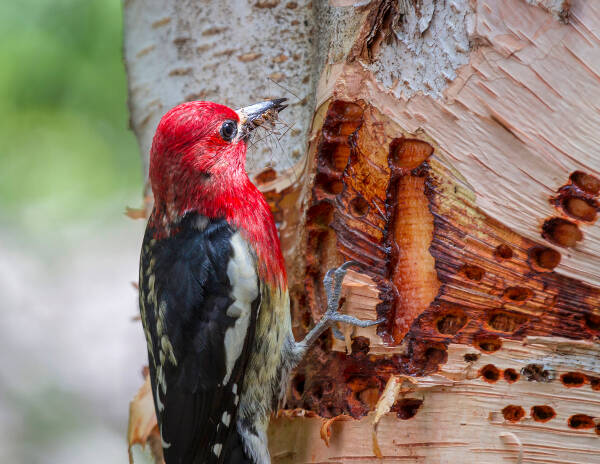“These places are not valuable because bird-watching is a nice hobby. They are important because birds indicate life in its richness and its diversity, and without places where birds are, we would have a deeply impoverished planet.” — Simon Barnes, “How to be a Bad Birdwatcher, to the Greater Glory of Life (2004)
In the last few years, several highly credible scientific studies have documented a significant decline in songbird numbers over the past half-century.
Although climate change is a contributor, most of the declines to this point are attributable to lost or degraded habitats. This is a problem we can all do something about, starting right now!
In his 2014 book “Welcome to Subirdia: Sharing Our Neighborhoods with Wrens, Robins, Woodpeckers, and Other Wildlife,” avian biologist John Marzluff, a frequent visitor to Vashon, wrote about how his research has shown that mixed rural-suburban landscapes — like Vashon’s — can support healthy, large and diverse populations of birds if we manage our lands with birds and wildlife in mind.
Here are a just few examples of what that means.
Landscape with native plants as much as possible
Of all the positive attributes of our native flora – beauty, hardiness, low maintenance, water-saving – perhaps the most important is the role they play as hosts for eggs and larvae of beneficial native insects. Nearly every species of bird that inhabits or visits Vashon requires insects in their diets or, especially, in the diets of their nestlings during the breeding season.
Research by entomologist Douglas Tallamy, author of Nature’s Best Hope (2019), indicates that non-native plants, even ones that attract pollinators, just can’t compare with natives in this department. That doesn’t mean you can’t have your favorite non-native flowering shrubs or flowers in your garden. But when we understand the importance of native plants to healthy bird and wildlife habitats and begin to “think native,” we can begin to craft landscapes that are not just pretty but are fully part of the complex web of our Northwest ecosystem.
Learn to love the dead stuff
When you discover all the things that dead trees and logs provide for wildlife, these features begin to look more and more beautiful!
That dead tree, or snag, behind your house is another host for native insects, including the ants that woodpeckers love, and as the snag decays, it can provide nest cavities for an array of birds, from chickadees to woodpeckers. If a dead or dying tree isn’t a hazard, leaving it in your landscape provides a great resource for wildlife, even after it falls over. Logs and brush piles provide feeding and hiding places for birds, amphibians and small mammals.
Remove invasive species
Invasive species transform and overwhelm native plant habitats, and, like most non-native species, they do not provide the full range of resources and services that insects, birds and other wildlife need.
Not every non-native plant species is an invasive species — far from it — but species such as English holly, English ivy, yellow archangel, and some others will dominate a site to the exclusion of more beneficial species and drastically alter the habitat features our birds and wildlife depend on. Depending on your landscape, getting rid of invasive species may be a really big job. We do what we can, but well-placed efforts can yield satisfying rewards, and the birds will thank you.
Make do with less lawn
Lawns really aren’t very green. While requiring lots of water during our increasingly warm and dry summers, and lots of energy to keep them mowed, lawns provide precious little for beneficial insects, birds or other wildlife — the familiar American robin worm patrol notwithstanding.
Lawns and playfields have their place, but if we can replace any part of our lawn area with native trees, shrubs and hardy wildflowers, it will be a contribution towards supporting the complex food webs and physical habitat features that all of our wildlife need.
Observe your landscape
Many bird species are conspicuous and observable, and an abundance of birds and a diversity of bird species indicate that our landscapes are meeting the habitat needs for our whole complement of native wildlife, from pollinating insects to large mammals, even wild salmon.
We know how to do this. None of us by ourselves can reverse the sobering population declines of birds and wildlife by ourselves. But every one of us can do something to make our gardens, landscapes, and larger properties more welcoming for birds and wildlife, and together we make a difference. And the best time to start is now!
Visit North Cascades Audubon’s Native Plants for Birds webpage to find more information to help you get started, plus links to many more resources.
Jim Evans is a restoration ecologist and educator on Vashon Island. He is on the board of Vashon Audubon and a longtime member of the Washington Native Plant Society. Find out more about Vashon Audubon at vashonaudubon.org.


